Dinner Rolls
This post may contain affiliate links. Read my full disclosure policy.
Perfectly soft, fluffy, and buttery—these are the absolute best homemade dinner rolls, and they’re sure to make any meal feel extra special.
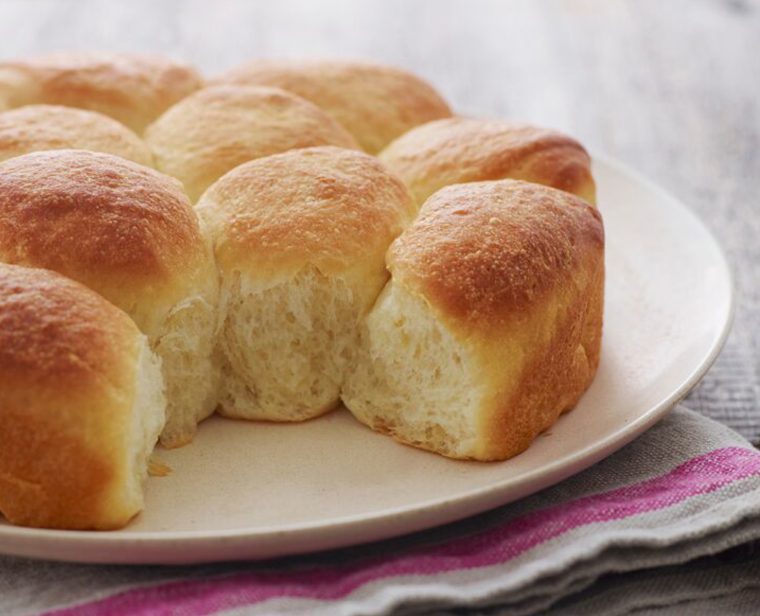
Photo by Alexandra Grablewski (Chronicle Books, 2018)
In my first cookbook, I dedicated a whole chapter to homemade breads, from traditional challah and cornbread to sweet cinnamon swirl bread. When my editor suggested I include a simple dinner roll recipe in the mix, I set to work testing dozens of recipes. While many were quick and easy with short rising times—a plus, for sure—they were also disappointingly bland and dense. I finally came up with this recipe, which uses instant potato flakes and nonfat dried milk to tenderize the bread and add flavor. These dinner rolls are soft and fluffy, with an open crumb and rich, buttery flavor. While they may not the fastest dinner rolls out there, I firmly believe they are the very best.
“These were a hit! Surprised because I thought was making just a basic dinner roll. Nope!”
What You’ll Need To Make Dinner Rolls
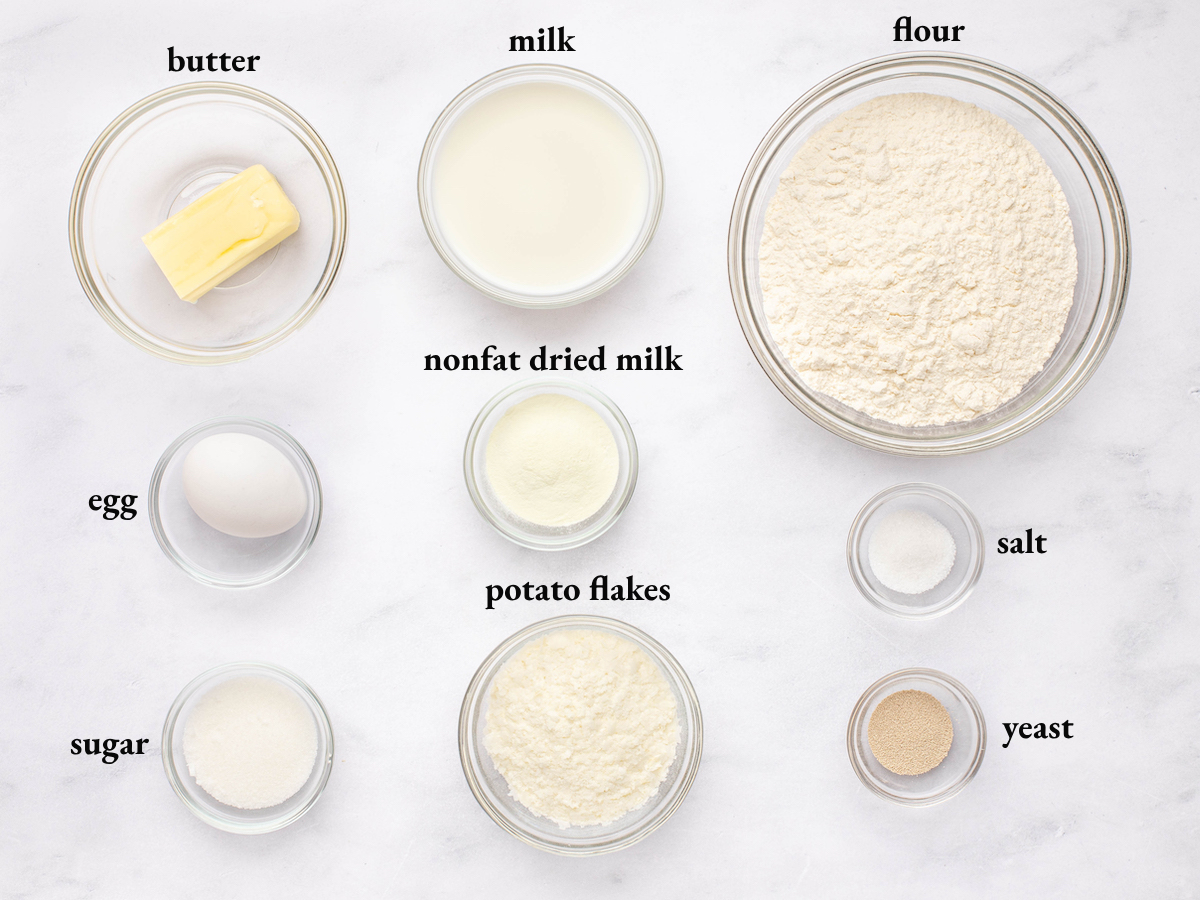
- Milk: Adds richness and flavor to the dough, contributing to the tender texture of the rolls.
- Water: Provides additional moisture needed for the dough.
- Egg: Contributes to the richness and color of the rolls.
- All-purpose flour: The base of the rolls, providing the necessary gluten for the rolls’ texture.
- Instant potato flakes: Add moisture, tenderness, and flavor to the rolls, also help to retain freshness.
- Nonfat dried milk: Adds protein, fat, and flavor to baked goods without impacting the liquid-to-dry ratios. This enhances flavor, tenderness, and the browning of the crust.
- Sugar: Adds a touch of sweetness to the rolls to enhance their flavor.
- Instant, quick, or rapid-rise yeast: Leavening agent that causes the dough to rise, making the rolls light and fluffy.
- Butter: Adds flavor, richness, and tenderness to the rolls; also used for brushing on finished rolls for a soft, flavorful crust.
- Jump to the printable recipe for precise measurements
Step-by-Step Instructions
Step 1: Make the Dough
In a small microwave-safe bowl combine the milk and ¼ cup water. Heat until lukewarm, 20 to 30 seconds on high heat. (This can also be done in a small saucepan on the stove.)
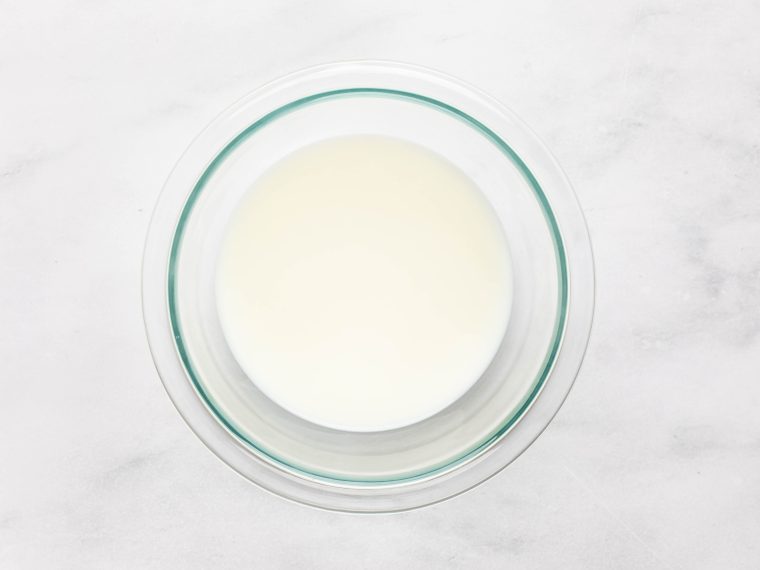
In the bowl of an electric mixer fitted with the dough hook, combine the egg, flour, potato flakes, dried milk, sugar, yeast, salt, and 3 tablespoons of the butter.
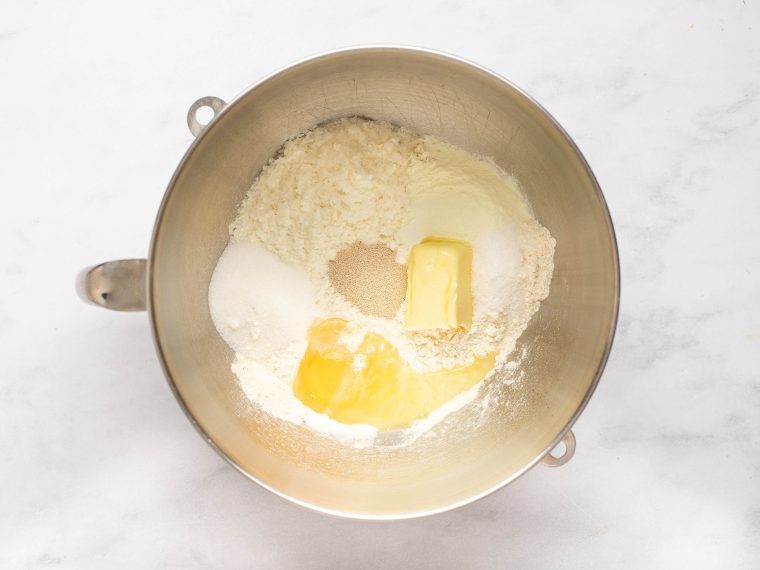
Add the warm milk/water mixture.
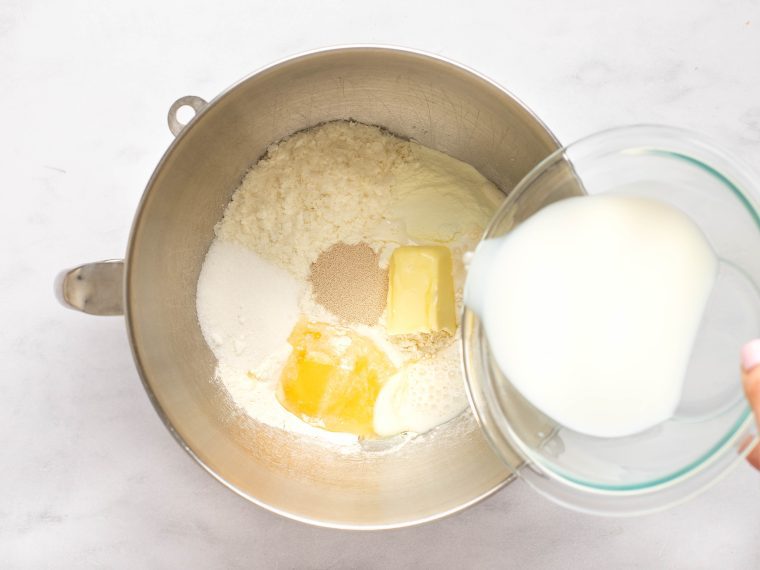
Knead on medium-low speed for about 5 minutes until you have a smooth, soft dough. (Don’t worry if the dough sticks a bit to the bottom of the bowl.)
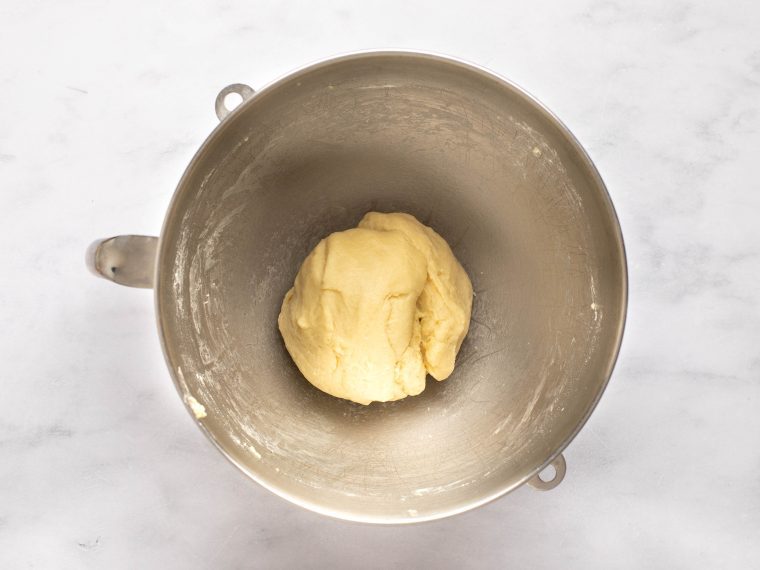
To remove the dough from the bowl, dust your hands with flour and scrape it out. Using your hands (dust them with more flour if necessary), shape the dough into a ball and place in a lightly greased bowl. Cover the bowl with plastic wrap or a damp kitchen towel.
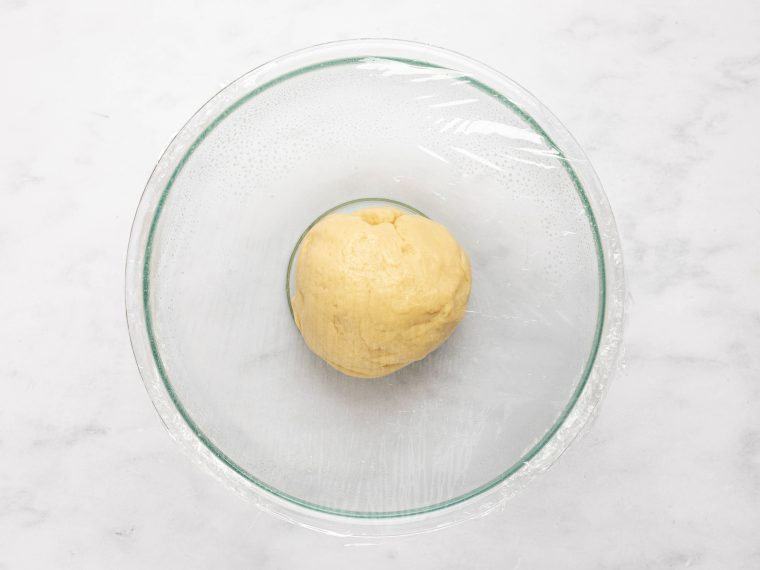
Step 2: Allow the Dough to Rise
Let the dough rise in a warm, draft-free place until it’s doubled in bulk, about 90 minutes.
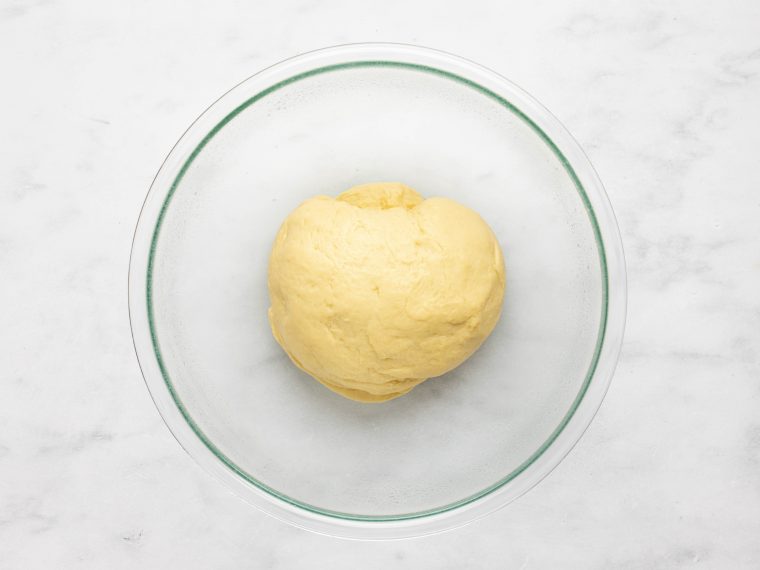
Invert the dough onto a lightly floured work surface (it will deflate).
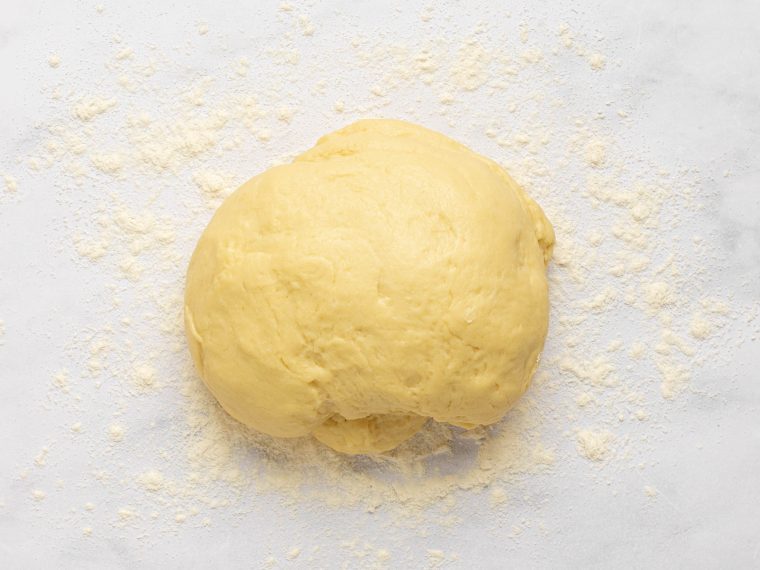
Step 3: Form Buns and Let Rise Again
Divide it into 12 even pieces (each piece should weigh 1¾ to 2 ounces). Shape each piece of dough into a smooth ball by tucking and pinching the edges underneath to form a plump little bun.
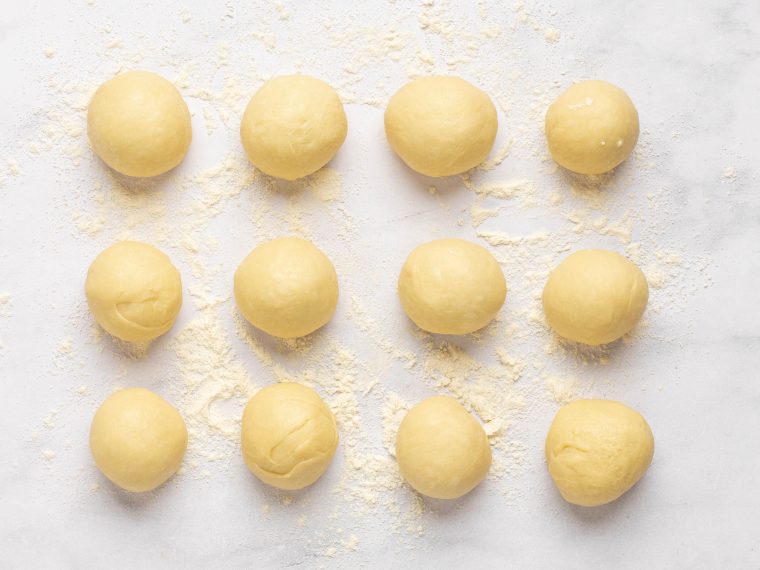
Grease a 9-inch round baking pan with nonstick cooking spray. Place the rolls in the pan, arranging 8 evenly around the perimeter and 4 in the center. Cover the pan with plastic wrap or a damp kitchen towel and let the rolls rise until they’re almost doubled in bulk, puffy, and touching, about 1 hour. Toward the end of the rising time, preheat the oven to 350°F and set an oven rack in the middle position.
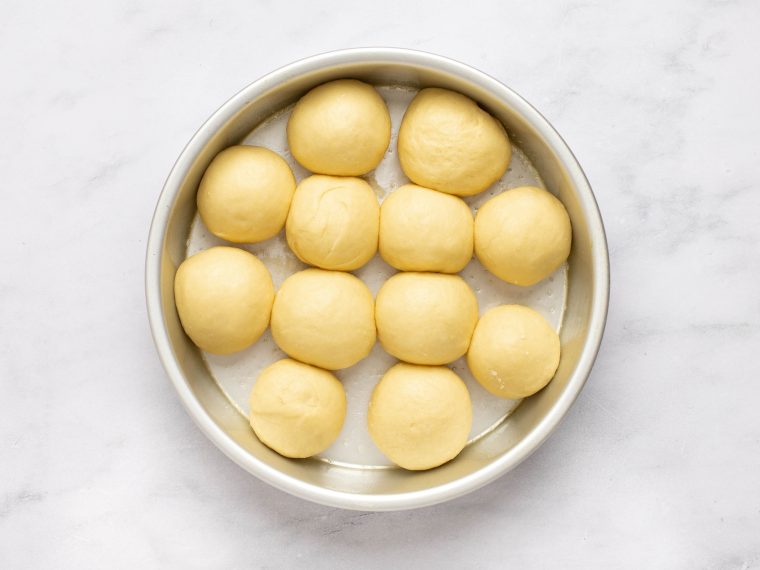
Melt the remaining 1 tablespoon butter. Brush the rolls with the melted butter.
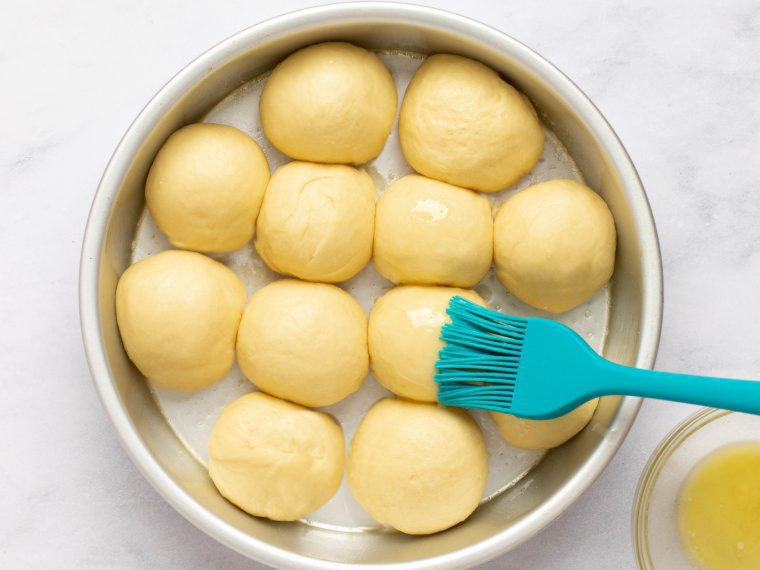
Step 4: Bake
Bake for 23 to 25 minutes, until golden brown. Remove from the oven, and turn out onto a wire rack. Serve warm or at room temperature with butter. Store the rolls in a sealable plastic bag for several days at room temperature, or freeze for longer storage.
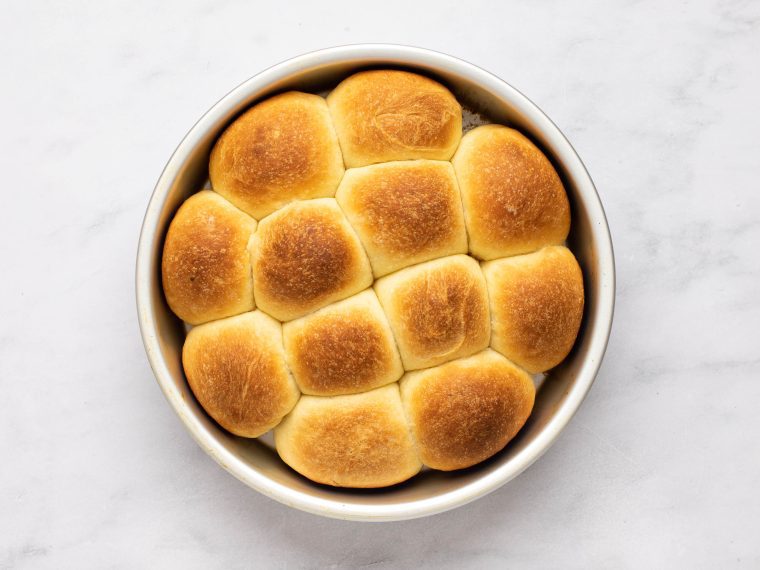
Frequently Asked Questions
Potato flakes and nonfat dried milk may seem like unusual ingredients for rolls, but they actually serve an important purpose in the baking process. Potatoes have a lot of starch, which is able to absorb and retain a lot of moisture. Adding potato flakes to the bread dough results in soft, fluffy rolls with an extended shelf-life. Additionally, dried milk — which is milk in its most concentrated form — adds protein, fat, and flavor to baked goods without impacting the liquid-to-dry ratios. This translates to bread and rolls that are especially tender and flavorful.
Yes! While the recipe calls for instant, quick, or rapid-rise yeast, it’s fine to use active dry yeast if that’s what you have on hand. In the past, active dry yeast needed to be dissolved in liquid before incorporating it into a recipe, but it has now been reformulated into a smaller particle size, making it easier to use without dissolving it first. The dough will just take a little longer to rise.
Yes, you can freeze the rolls before or after baking. To freeze before baking, after completing the first rise and shaping the dough into 12 balls, put the dough balls on a baking sheet, pop them in the freezer for about an hour or until they are no longer tacky, and then put then in a resealable freezer bag in the freezer for up to 3 months. When ready to bake, thaw the dough balls at room temperature for a minimum of 3 hours. Once thawed, place the dough balls in the baking dish for the second rise and proceed with recipe.
To freeze the baked rolls, let them cool completely, wrap tightly in aluminum foil, and place in a freezer bag in the freezer for up to 1 month. To thaw, remove the rolls from the freezer and let sit at room temperature for at least 3 hours. Place the foil-wrapped rolls in a preheated 350°F (180°C) oven for 10 to 15 minutes, until warm.
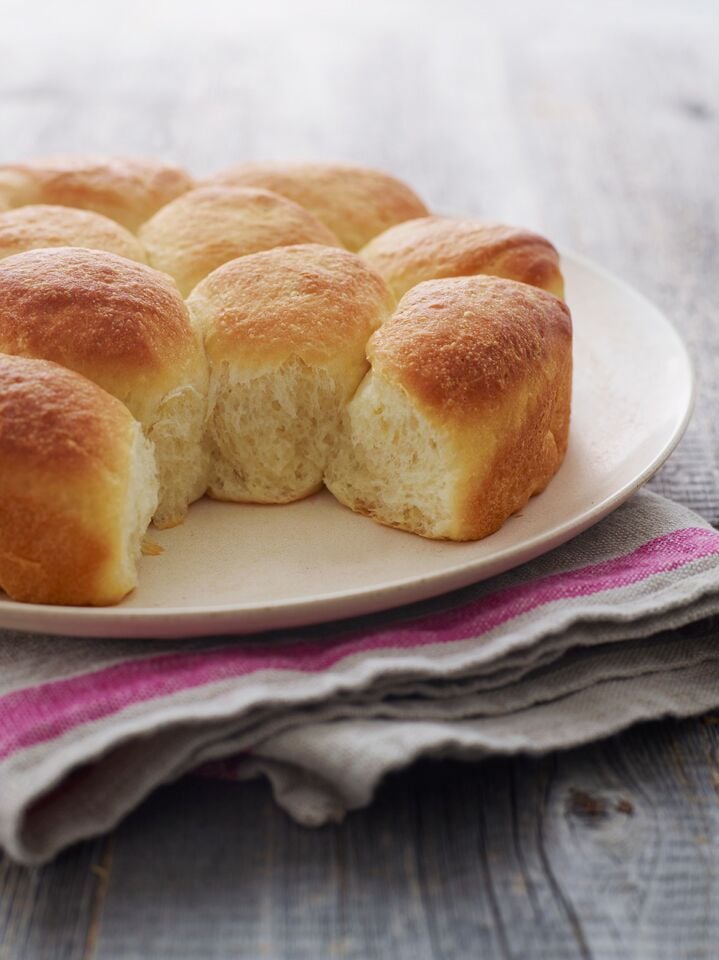
You May Also Like
Dinner Rolls
Perfectly soft, fluffy, and buttery—these are the absolute best homemade dinner rolls, and they’re sure to make any meal feel extra special.
Ingredients
- ½ cup milk
- ¼ cup water
- 1 egg
- 2 cups all-purpose flour, spooned into measuring cup and leveled-off, plus more for dusting
- ½ cup instant potato flakes
- 2 tablespoons nonfat dried milk
- 2½ tablespoons sugar
- 1¼ teaspoons instant, quick, or rapid-rise yeast
- 1¼ teaspoons salt
- 4 tablespoons unsalted butter, at room temperature, plus more for serving
Instructions
- In a small microwave-safe bowl combine the milk and water. Heat until lukewarm, 20 to 30 seconds on high heat. (This can also be done in a small saucepan on the stove.)
- In the bowl of an electric mixer fitted with the dough hook, combine the egg, flour, potato flakes, dried milk, sugar, yeast, salt, and 3 tablespoons of the butter. Add the warm milk and water mixture and knead on medium-low speed for about 5 minutes until you have a smooth, soft dough. (Don’t worry if the dough sticks a bit to the bottom of the bowl.) To remove the dough from the bowl, dust your hands with flour and scrape it out.
- Using your hands (dust them with more flour if necessary), shape the dough into a ball and place in a lightly greased bowl. Cover the bowl with plastic wrap or a damp kitchen towel and let the dough rise in a warm, draft-free place until it's doubled in bulk, about 90 minutes.
- Invert the dough onto a lightly floured work surface (it will deflate). Divide it into 12 even pieces (each piece should weigh 1¾ to 2 ounces). Shape each piece of dough into a smooth ball by tucking and pinching the edges underneath to form a plump little bun.
- Grease a 9-inch round baking pan with nonstick cooking spray. Place the rolls in the pan, arranging 8 evenly around the perimeter and 4 in the center. Cover the pan with plastic wrap or a damp kitchen towel and let the rolls rise until they're almost doubled in bulk, puffy, and touching, about 1 hour. Toward the end of the rising time, preheat the oven to 350°F and set an oven rack in the middle position.
- Melt the remaining 1 tablespoon butter. Brush the rolls with the melted butter and bake for 23 to 25 minutes, until golden brown. Remove from the oven, and turn out onto a wire rack. Serve warm or at room temperature with butter. Store the rolls in a sealable plastic bag for several days at room temperature, or freeze for longer storage.
- Freezing Instructions: You can freeze the rolls before or after baking. To freeze before baking, after completing the first rise and shaping the dough into 12 balls, put the dough balls on a baking sheet, pop them in the freezer for about an hour or until they are no longer tacky, and then put then in a resealable freezer bag; freeze for up to 3 months. When ready to bake, thaw the dough balls at room temperature for a minimum of 3 hours. Once thawed, place the dough balls in the baking dish for the second rise and proceed with recipe. To freeze the baked rolls, let them cool completely, wrap tightly in aluminum foil, and place in a freezer bag. Freeze for up to 1 month. To thaw, remove the rolls from the freezer and let sit at room temperature for at least 3 hours. Place the foil-wrapped rolls in a preheated 350°F oven for 10 to 15 minutes, until warm.
Nutrition Information
Powered by ![]()
- Per serving (12 servings)
- Calories: 139
- Fat: 5 g
- Saturated fat: 3 g
- Carbohydrates: 20 g
- Sugar: 3 g
- Fiber: 1 g
- Protein: 3 g
- Sodium: 119 mg
- Cholesterol: 25 mg
This website is written and produced for informational purposes only. I am not a certified nutritionist and the nutritional data on this site has not been evaluated or approved by a nutritionist or the Food and Drug Administration. Nutritional information is offered as a courtesy and should not be construed as a guarantee. The data is calculated through an online nutritional calculator, Edamam.com. Although I do my best to provide accurate nutritional information, these figures should be considered estimates only. Varying factors such as product types or brands purchased, natural fluctuations in fresh produce, and the way ingredients are processed change the effective nutritional information in any given recipe. Furthermore, different online calculators provide different results depending on their own nutrition fact sources and algorithms. To obtain the most accurate nutritional information in a given recipe, you should calculate the nutritional information with the actual ingredients used in your recipe, using your preferred nutrition calculator.

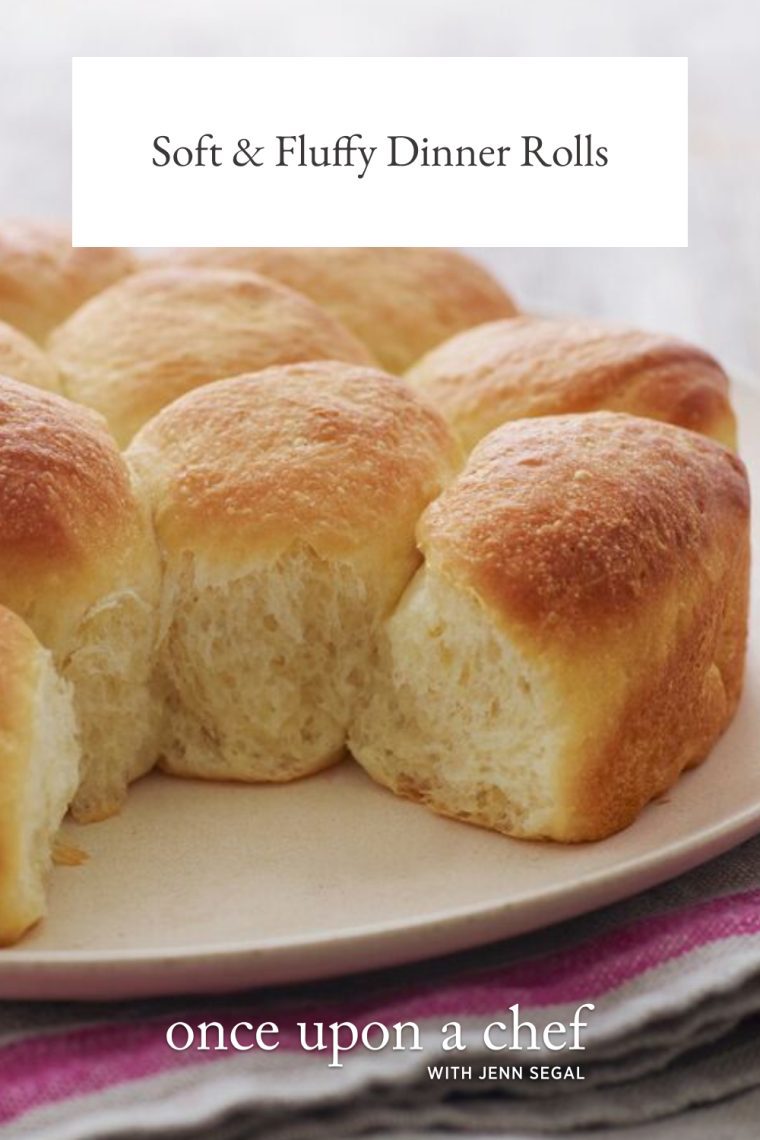
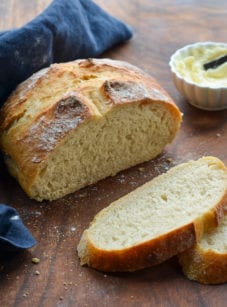
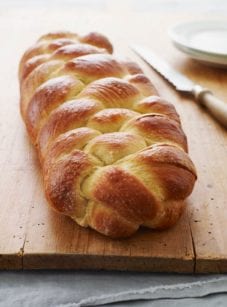
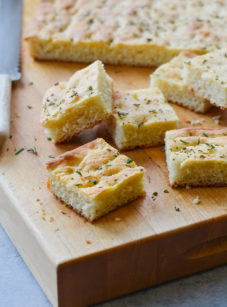

Hi Jenn! I’m in a pickle, unable to find my dough hook. Would you advise me to use the paddle and then stop, remove dough and knead once all ingredients are mixed? I realize I’m asking something probably untested, but I’d love your advice! Thank you, Gina
Hi Gina, what you’re suggesting should be fine. Please LMK how they turn out!
Thanks for the reply! I made them as described above, but I am sure I over-or under-kneaded them. I had a hard time getting the first rise. They turned out too heavy, but still tasted great. I just recently moved and finally found the box with my dough hook it it; so rarely used it was with random items. Now I can try the recipe as you have written it! I think if I had more experience kneading the method would work.
I just have to say your work is amazing! Your recipes and the clear precise information included takes my cooking world to a level I don’t think I could have ever achieved. Thank you for your contribution to the whole cooking world, but especially for my happiness and satisfaction with my favorite hobby.
💜💜
I am not a confident yeast baker, but these rolls were super easy to make and made me look like a professional baker. They looked amazing and were delicious. Bonus – the few that were leftover heated beautifully the next day. Another winning recipe!
As usual Jenn’s recipes do not disappoint.
I made the dinner rolls this evening. They were definitely the best I have ever eaten.
Yummy! And easy! And “flub” proof! I have baked bread all my life (and I’m in my 80s) but don’t often bake yeast rolls, finding them tedious, and often difficult to time so that they are hot from the oven when the rest of dinner is cooked. Today I mixed the dry ingredients and put the egg out to come to room temp. When it was time to start I added the milk/water and had almost finished kneading, admiring the soft, beautiful dough – and spotted the egg on the counter! Oh, good grief! I turned off the mixer and attempted to stir in the egg as much as possible, then turned it on again for another minute of kneading, and continued rising and shaping per recipe directions. Because I had meatloaf in the oven, and that recipe called for a much higher temp for the final 15 minutes, I crossed my fingers and baked the rolls in a toaster oven. The recipe timing was perfect, and the rolls couldn’t have been better! We will definitely enjoy these again. I may try this dough recipe for cinnamon rolls…. It seems like a goof-proof recipe to me and I can’t wait to make them for extended family. Thank you, Jenn!
Just wondering if you think dried buttermilk powder might work in this recipe in place of the dried milk?
Hi Carol, I think it would work but haven’t tried it myself so can’t say for sure. Please LMK how it turns out if you try it!
Hi Jenn,
I would love to try these yummy dinner rolls, but I haven’t got dough hooks for my mixer. What’s the best way to mix the dough without them? Thank you!
Hi Johanna, I think you can get away with kneading them by hand – hope you enjoy!
OMG!😱
These are amazing! They remind me of home made bread, the kind grandma used to bake. I have used so many of your recipes. Another awesome recipe! So satisfying for so little effort.
Hi Jenn, these look so yummy. If I have leftovers (as if) how do you suggest I reheat them? I see some folks use a crockpot lined with slightly damp tea towel then also place the same on top of the rolls, cover and warm on the Lo setting for 30 minutes. Microwaving just makes them tough. Thanks in advance for your help.
Hi Liz, That sounds like a smart plan. I don’t have a crockpot so I’d just wrap the rolls in foil and warm in a 300°F-oven for 10-15 minutes. Hope that helps!
Can i use 10” round pan?
I wouldn’t recommend it – sorry!
Hi Jenn,
I never made a dinner roll in my life, but when I was asked to bring them to a party,I figured, what the heck, i’ve never been disappointed with Jens recipes. Who would ever think to put powdered milk and dried potato flakes in a roll? But I think that’s the real secret ingredients. I looked up other dinner rolls to see if that is a standard thing, but I did not see it featured anywhere. You are a genius!
I don’t have a mixer with a dough attachment. Can you give instructions for someone doing the dough by hand?
Hi Patricia, just knead the dough by hand for the same amount of time specified in the recipe (5 minutes). I’d love to hear how the rolls come out!